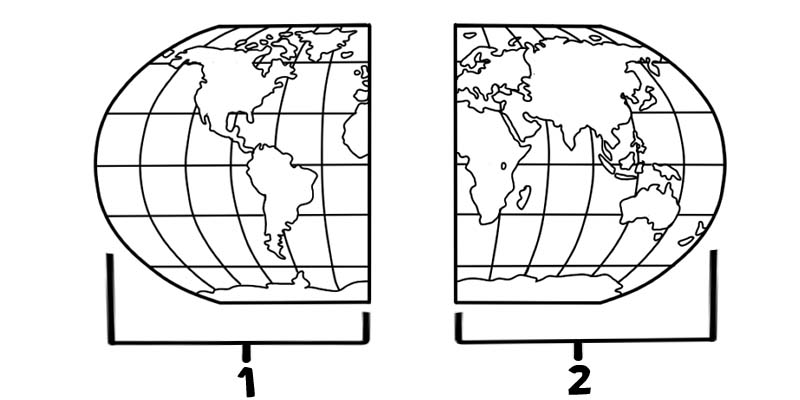A hemisphere is half of the Earth when we divide it into two equal pieces. ‘Hemi’ means half and ‘sphere’ means a round object. Our Earth is divided into the Northern and Southern Hemispheres, and the Eastern and Western Hemispheres.

The Equator, or line of 0 degrees latitude, divides the Earth into the Northern and Southern Hemispheres.
1. The Northern Hemisphere contains North America, the northern part of South America, Europe, the northern two-thirds of Africa, and most of Asia. The Northern Hemisphere surface is about 40% landmass and is covered by about 60% water. It contains 67.3% of Earth's land. Also, 90% of world population is concentrated in Northern hemisphere because most of the landmasses lie in the Northern part of the earth which has fertile soil which is better for people to reside.
2. The Southern Hemisphere contains most of South America, one-third of Africa, Australia, Antarctica, and some Asian islands. The Southern Hemisphere is made up of 90% water and is rather uninhabitable. Moon seems to be upside down in the Southern Hemisphere.
The climate of the Northern Hemisphere is different from that of the Southern Hemisphere because of the Earth’s seasonal tilt towards and away from the sun. As the Earth is slightly tilted on its axis, and depending on the time of the year, one of the hemispheres is tilted toward the Sun, while the other half is, obviously tilted away from the Sun. And thus, when one hemisphere experiences the cold conditions of the winter season, the other hemisphere experiences the warm conditions of summers.
In the Northern Hemisphere, the warmer summer months are from June through September. In the Southern Hemisphere, summer begins in December and ends in March.
Though the two hemispheres differ drastically in climate, they have one thing in common – the Sun rises in the East and sets in the West in both hemispheres.
The Northern Hemisphere is ideal for deep-space observation. Due to the clarity of the sky, the stars are far more visible and seem much brighter.

The Earth can also be divided into hemispheres along meridians or lines of longitude. The prime meridian, or ) degrees longitude, and the International Date Line, 180 degrees longitude, divide the Earth into Eastern and Western hemispheres.
1. The Eastern Hemisphere includes Europe, Asia, and Africa, and has the Atlantic Ocean on its western border and the Pacific Ocean on its eastern border.
2. The Western Hemisphere includes North America and South America and has the Pacific Ocean on its western border and the Atlantic Ocean on its eastern border.
The Sun rises in the East and sets in the West in both Hemispheres.